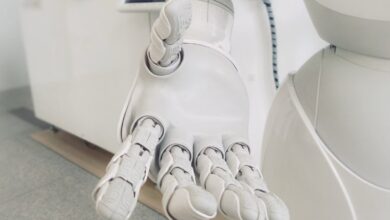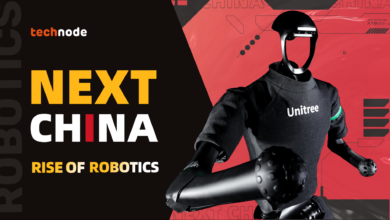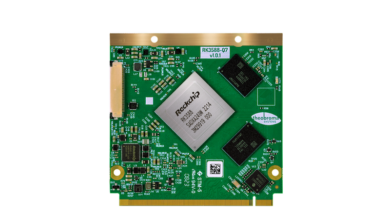FIRST robotics victory is a win and hope for Israeli education

With many airlines canceling flights, it was not certain they and other participants would make it to Houston. A few never did.
The group – sophomores, juniors, and seniors – were headed to Texas to compete in the global four-day FIRST robotics competition. With them came their little robots. In all, some 550 youth and adults comprising 14 Israeli teams traveled to Houston, competing in several events.
A few days later, the Orbit 1690 team from Cramim was on its way home as world champions. Their team built robots that outclassed the field. Israeli youth – Israel: population almost 10 million – had competed with, and cooperated with, teams from the US (population 330 million) and China (1.4 billion). And emerged champions. (See box: Winning team members).
I spoke with Mika Elias, a team member specializing in software code at the Technion. A high school senior, she was part of a group of 31 young people completing their high school education, and this fall about to start a year of National Service, mentoring young people in FIRST robotics and encouraging them to study STEM (science, technology, engineering, and math).
From Elias, I learned the inspiring story of how this talented, creative, and determined handful of young people from a high school in Binyamina won the Super Bowl of robotic competitions.
Full disclosure: Elias’s grandfather is my Technion colleague, emeritus professor Ezra Elias, mechanical engineering; and her grandmother is Noa Elias, a school psychologist and longtime friend and colleague of my wife, Dr. Sharone Maital.
Elias said that her grandfather helps her study physics and math, and her grandmother offers wise counsel.
Values come FIRST: FIRST is an international youth organization. The acronym stands for “For inspiration and recognition of science and technology.” It was founded by Dean Kamen in 1989.
Kamen is best known as the genius inventor of the Segway, a two-wheeled, self-balancing personal vehicle. Born to a Jewish family in Long Island, New York, he showed early talent as an entrepreneur. In high school, he was already earning $60,000 a year building light and sound systems for local musical bands.
Kamen was disappointed with the paucity of young people worldwide who chose science and technology careers – déjà vu for Israel. Kamen partnered with legendary MIT professor Woodie Flowers, who developed a design competition for his famous MIT course 2.007 – Design and Manufacturing. It became an annual MIT event for over five decades and is widely emulated around the world. Kamen says of all his innovations, he is most proud of FIRST.
From the first competition in 1992, FIRST has grown to include over 3,000 high school teams from some 60 countries. Unlike cutthroat team sport competitions, FIRST imbues Flowers’ “gracious professionalism,” built on empathy and respect for other teams, structured around “coopetition” in which teams learn equally to compete and to collaborate.
Incoming FIRST Israel CEO Gila Kusan told The Jerusalem Post’s reporter Eyal Green that “there is intensive work on the core values, to give the kids a sense of security. …Throughout the teams’ preparation, there is a feeling of camaraderie – we are the FIRST family; despite that horrific [October 7] event, we found a way to have this activity, and it allowed us to attain incredible achievements.”
Elias enumerated to me the core values she learned in the FIRST program: inclusiveness, fun, innovation, discovery, teamwork, impact on and service to the community. In her National Service year, she will mentor young people in their FIRST teams, including those evacuated from the Gaza and northern borders, to help instill those values. She will then join the IDF and spend six years writing software code.
How the competition works: Elias explained that it all began in early January with a broadcast on Twitch, an American live-streaming service, explaining the mission – to design robots that pick up disks and toss them high into a bin. High school teams all over the world receive an instruction manual, defining the specifications, and a set of parts to which they can add off-the-shelf. (Next year’s competition will apparently involve underwater robots).
Teams organize and choose management leaders and specialists in mechanics, software, and CAD (computer-aided design). They plan, build, test, and code – leading up to the late April global contest in the US.
Defense, defense: I asked Elias why she thought the Orbit 1690 team from Cramim won. She lauded the team’s robot “driver,” Yoav Rahmani.
“He’s a terrific driver!” she said. Robots are partly autonomous, driven by software, but partly non-autonomous, with drivers who operate them.
Like soccer teams, robots attack, to score points by flipping disks into bins; and defend, to prevent opponent robots from scoring.
In the championship final contest, four Blue teams, including Israel’s Orbit 1690, battled four Red teams. The Blue squad chose a kind of Iron Dome strategy, defending aggressively to keep the opponent from scoring. It worked. The Blue squad won five of six bouts in the final.
There is a powerful lesson here. Part of FIRST’s value-based culture is focused on fostering collaboration. In the final, Orbit 1690 had to collaborate with three other teams in a very short time – teams they were unfamiliar with. It was rather like Argentina’s soccer team merging with rivals Brazil in the World Cup, seamlessly integrating the two teams, and then competing with a merged France-England team, all in just a day or two.
For the record, Israel’s team joined with Team SCREAM from Sedalia, Missouri; Team 8-Bit from Phoenix, Arizona; and Team RoboLancers from Philadelphia, Pennsylvania, to win the championship.
The Shadow of October 7: Elias and her fellow team members worked intensively on their robots in the shadow of the October 7 trauma.
FIRST Israel CEO Ido Mazursky was called up for IDF reserve duty for the first three weeks of the war. On his return, he gathered the FIRST mentors and told them to “get the kids to the workshops.” He told The Jerusalem Post that this year’s preparation and competition were dedicated to five FIRST alumni who fell in Gaza and the southern border: Itai Seif; Joseph Yosef Gitarts; Ohad Ashur; Jonathan Mimon; and Marguerite Gosak.
Kudos to the school: Cramim Binyamina is a six-year state high school, grades 7-12, with about 1,700 students and 170 teachers and administrative staff. The school’s website asserts, “We are a school that combines science and technology studies, together with social and humanistic studies …We provide personal treatment to each of our students in a warm inclusive environment, while providing a large variety of social options. The school’s professional team educates our students in values, professionalism, and excellence and encourages them to develop their abilities.”
Well done, Cramim! Israel’s Education Ministry is criticized almost daily for its failings. Let’s recognize that there are many terrific schools, with equally terrific kids and inspired teachers, who will lead Israel’s hi-tech economy to new heights.
The Cramim team was not the only Israeli winner. A team from a Holon high school excelled, too. They were finalists for the coveted Impact award for community service with youth evacuated from border areas.
Jewish values: In last year’s global FIRST event, an Israeli high school robotics team from a school in Modi’in, the national champion, withdrew from competition the day before the finals. They explained in a letter that because the finals were scheduled for Shabbat, they could not compete. Their letter was read over the loudspeakers and drew a standing ovation from the crowd.
What makes a champion? I was eager to learn Israel’s secret sauce. What is it about our youth that leads them to excel in robot competitions, in defending our country, and later, in building hi-tech start-ups that drive our economy?
Elias recounted her family history. As a young child, she spent six years in the US, when her father’s start-up Coral Sense operated there. Then she lived for 18 months with her family on a catamaran (double-hulled boat), sailing in the Caribbean and being home-schooled, when she was eight and nine. Later, she attended Amirim Elementary School in Binyamina; her classmates were among those who later became her FIRST teammates at Cramim. Her father taught her software coding, a skill which she later expanded through study, mentoring, and courses.
The secret sauce? We have flocks of visitors from abroad to the Technion, eager to learn the recipe. I tell them candidly that I don’t know what it is. Perhaps our people’s 3,500 years of struggle, survival, resilience, and creative thinking. And our Torah, which commands us to strive to be a blessing to the world.
An abyss is a seemingly bottomless pit. The word “abyss” is also used to describe an unbridgeable gap between competing ideologies or policies.
Yes, David Grossman, it did seem for a time that Israel was indeed creating and falling into an abyss, long before October 7. At times, it still seems so. But since 1967, I have had the privilege, nearly every single workday, to interact with bright young people.
I wish my readers could have joined me, sitting opposite Mika Elias, to bask in the boundless energy, optimism, and hopefulness she radiated. Her eyes sparkled as she recounted her adventure, describing how she and the Cramim team planned, built, and operated those amazing little robots.
It cannot be denied. Our young people are capable of amazing feats. And they will lead us toward a better, brighter future. Count on it.■
Winning team members
For the record, these are the Cramim School robotics team members that brought home the world championship: Management Team: Hadar Bar Aharoni, team captain & CAD lead; Ella Lidor, team captain; Software Team: Omer Prag, software lead – robot; Amit Chayko, Mika Elias; Omri Lerner, software lead – vision; Itamar Schwartz, software lead – apps; Itay Nauman, Michal Landwer, Amit Askof, Dor Inon, Ido Zipori, Doron Malka, Yan Vazan, Ori Krisi, Yahav Fruchter; CAD Team: Noam Tal, Jonathan Shaharabani, Bat Chen Shaked, Alon Gonen, Aviv Rozen, Ella Nuriel, Shai Nisenbaum, Yonatan Harel; Yoav Rahmani, Yotam Manash; Mechanics Team: Tamir Sivan, Mechanics lead; Raz Peretz, Mechanics lead; Eitan Katzir, Dana Nisim, Noga Shubinsky, Gabrielle Garih; Danny Bryskin; Jonathan Musli, Tomer Harduff.
The writer heads the Zvi Griliches Research Data Center at S. Neaman Institute, Technion. He blogs at www.timnovate.wordpress.com.



